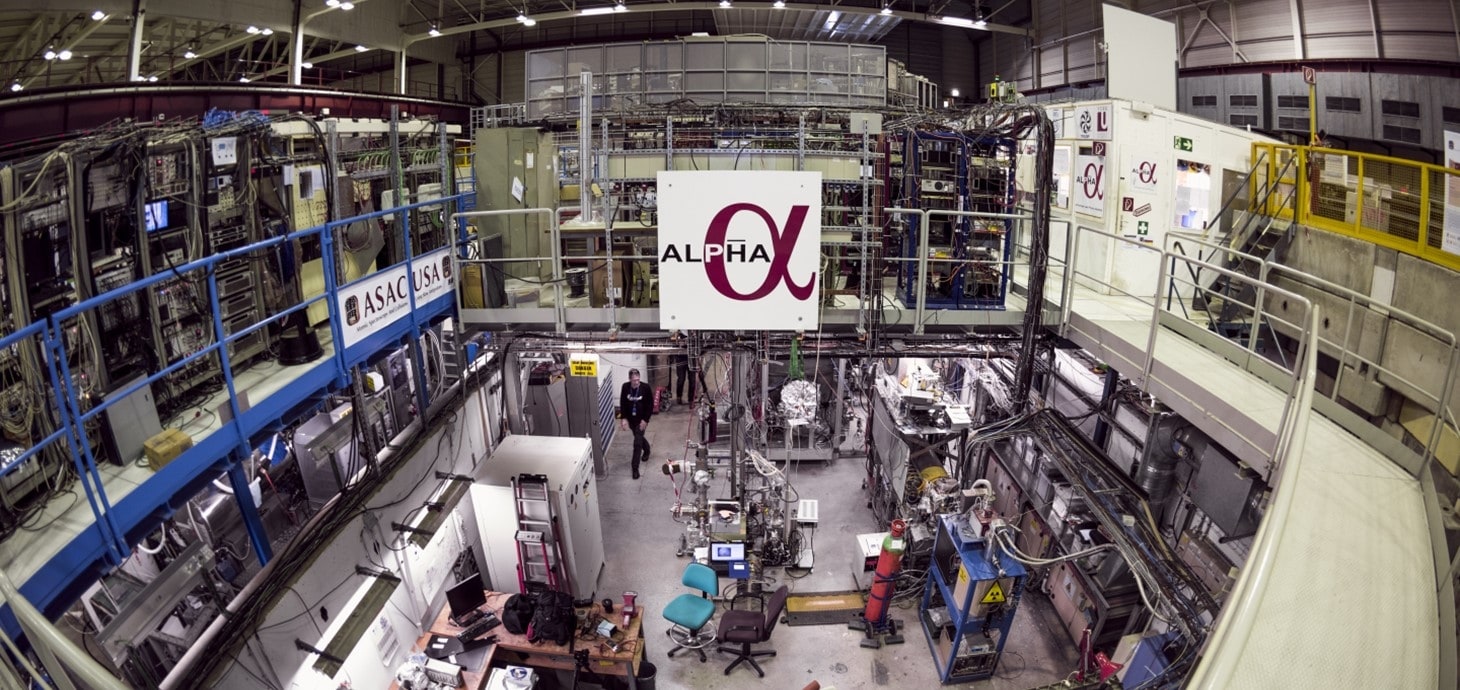These articles are now archived and will no longer be updated.

Swansea University physicists, as leading members of the ALPHA collaboration at CERN, have reported the first measurement of fine structure in Antihydrogen that relates to Willis Lamb’s famous discovery almost 70 years ago.
Researchers, including those from Swansea University who is a lead institution, with the ALPHA project at CERN, took advantage of their capability for laser spectroscopy of the Lyman-alpha line in antihydrogen, with the results representing an important step towards a precision measurement of the fine structure in the antihydrogen spectrum. Moreover, it could help determine whether hydrogen and antihydrogen have the same properties, an open question in physics, whose answer could have wide-ranging consequences.
The laser spectroscopy determined the fine structure splitting to be 10.95 ± 0.17 GHz. Combining this with their previous measurement of the 1S 1/2–2S ½ interval, the Lamb shift was determined to be 1.035 ± 0.094 GHz.
Professor Niels Madsen of Swansea University’s department of physics says: “Our unique capacity to address several transitions in antihydrogen has brought us close to be able to extract the same detailed information from antihydrogen, that, half a decade ago led to a revolution in matter-physics.”
In 1947, Willis Lamb reported an unexpected feature in the fine structure of the hydrogen spectrum. The American physicist – who would later receive a Nobel Prize for the discovery - was able to determine precisely a surprising shift in electron energies in a hydrogen atom.
Lamb’s work inspired many modern physicists to develop a theory around quantum electrodynamics (QED), and in the last 70 years QED has withstood scrutiny to be widely considered by many to be the most successful physical theory in existence.
By addressing the same details in antihydrogen, the researchers hope to eventually resolve the conundrum of why antimatter seems exceedingly scarce in the present-day universe.
Professor Stefan Eriksson from Swansea University’s physics department, concludes: “This amazing result demonstrates that we have a unique and amazing capability for precision studies of antihydrogen, one that a recent grant will add significant momentum to by allowing us to move towards start-of-the-art frequency metrology.”
